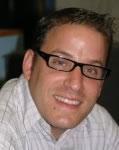Can One Cordon Off Evil Ideas from Art and Science
Many people face the dilemma today of deciding what media and speakers are acceptable to engage. Should you watch a movie produced by an anti-Semite? Should you listen to an opera written by a composer favored by the Nazis; what about accepting scientific research that was conducted by Nazis? These moral dilemmas are at the core of a larger issue - can there be a separation from contemptible people and the art they create?
Art is particularly problematic for those seeking morality in execution as well as theme, for many artists and performers are egotistical, vain, often willing to exploit anyone to advance their own art, and inclined toward flaunting their distaste toward conventional morality. For example, Pablo Picasso is remembered for powerful paintings such as his anti-war masterpiece
Guernica. However, his first cubist painting,
Les Demoiselles d'Avignon, shows five naked prostitutes who stare out at the viewer, taking in the perspective of a potential customer. The painting was universally condemned when it was first exhibited. Now it hangs prominently in the Museum of Modern Art in New York City. In short, the art world has overlooked Picasso's often-cruel depiction of women in art (and in his life). Similarly, in 1913, the brilliant young composer Igor Stravinsky wrote the score for a ballet presented by the prestigious Ballet
Russe Company of Serge Diaghilev, choreographed by Vaclav Nijinsky, the most famous male ballet dancer of the day, and conducted by the excellent Pierre Monteux. The result,
Le Sacre du Printemps, created a riot at its Paris premiere, as the ballet graphically depicted the ancient pagan sacrifice of a virgin. The audience literally drowned out the substantial orchestra, but was probably much more offended by the choreography, which featured deliberately crude, "primitive" movements, unlike the refined, graceful movements of conventional ballet. Today, however, the work is considered a staple of the orchestral repertory in spite of its gory programmatic theme (the choreography, as with most ballet revivals, is usually modified).
Then there is Richard Wagner, whose work and legacy is notoriously contentious and divisive. Jewish conductors such as James Levine of the Metropolitan Opera have conducted and championed Wagner's operas, yet public performances in Israel have been, socially verboten. Long-time Israel Philharmonic conductor
Zubin Mehta played one Wagner excerpt as an encore in 1981, and Daniel Barenboim played another excerpt in 2001 in Jerusalem, but they were met with fierce demonstrations and did not persist. In 2012, a planned Wagner concert sponsored by the Israel Wagner Society was canceled due to public opposition. Regardless of one’s opinion, Wagner’s influence on orchestral composition, and beyond, cannot be denied. Consider, for example, the popular
Star Wars films. In addition to similarities between these stories and the subject of Wagner's
Ring cycle, the use of short musical themes and phrases that are associated with specific characters, which is standard for many film, was pioneered by Wagner (the
leitmotif). The great Jewish conductor Leonard Bernstein once stated, alluding to Wagner’s achievements and enduring influence, “I hate Wagner, but I hate him on my knees.”
Nevertheless, Wagner exhibited vicious anti-Semitic beliefs throughout his life. In addition to writing his virulent anti-Semitic treatise,
On Jewishness in Music, denouncing the role of Jews in music, Wagner expounded upon his abhorrence of the Jews in his letters. Perhaps the most despicable is Wagner's
letter to Bavarian King Ludwig II in 1881, where he simultaneously acknowledges that his current conductor, preparer of the vocal score, and prospective impresario for an upcoming opera were all Jewish, but then gives vent to pure hatred:
If I have friendly and sympathetic dealings with many of these people, it is only because I consider the Jewish race the born enemy of pure humanity and all that is noble in man: there is no doubt but that we Germans especially will be destroyed by them, and I may well be the last remaining German who, as an artist, has known how to hold his ground in the face of a Judaism which is now all-powerful.
Proponents of Wagner point out that Wagner wrote voluminously on countless topics. Indeed, one volume of "selected" letters contains about 500 (and is nearly 1,000 pages long), which represents only about
5 percent of the composer's letters. There are those that argue Wagner was more of an opportunist than anything else. In
1881, the same year he wrote his most notorious anti-Semitic diatribe, he wrote: "I have absolutely no connection with the present 'anti-Semitic' movement." He chose
Hermann Levi, the son of a rabbi, to conduct the premiere of his final opera,
Parsifal, at Bayreuth, the opera house he constructed for the performance of his works, , in 1882; Levi continued to conduct the opera for a decade after Wagner's death in 1883. In typical fashion, Wagner tried to placate other anti-Semites who objected to Levi by trying to get the conductor to convert (or do a sham conversion) to Christianity, but Levi refused. Wagner's supporters note that Nazi ideologues would not have permitted Levi to conduct, especially at Bayreuth.
While many cite Wagner’s anti-Semitism as the reason for their objection, it is Wagner’s association with Nazism that most people find unconscionable. Although Wagner died in 1883, decades preceding the rise of Nazism, his ostentatious anti-Semitism and Hitler’s fondness of his music, appropriations as a German cultural role model, and usage of his music at Nazi rallies have resulted in Wagner’s conflation with Nazi ideology and the atrocities of the Holocaust. Professor Robert S. Witrich writes, “Wagner can hardly be held responsible for the monstrous way in which the Nazis implemented some parts of his vision half a century later. Moreover, many Wagnerians – then and now – were utterly remote from Nazism. Indeed, some were self-proclaimed humanists, socialists, feminists, vegetarians and free-thinkers.” For example, Wagner’s music found enthusiastic support among 19
th-century revolutionaries like the Empress of France and King Ludwig II of Bavaria, and even
Theodor Herzl, the founder of modern Zionism, who claimed to have listened to Wagner every evening while writing
The Jewish State.
Scientific research is even more problematic, especially when the research is designed to cause injury and death to subjects to its unwilling participants. When people think of inhumane (indeed inhuman), unethical and objectionable scientific studies, the
Nazi concentration camp examples immediately come to mind. Josef Mengele is the most infamous Nazi officer and physician who conducted these horrific experiments at Auschwitz-Birkenau from 1943-45. Mengele became obsessed with unusual people, especially
twins (perhaps because twins fit the experimental model of a matched subject and control). While he played classical music and at times projected a facade of medical protocol (extensive medical drawings and models of the subjects' anatomy, etc.), he was a sadistic monster who tormented his subjects with wretched experiments, and then would often kill them once finished. Of the
3,000 people he experimented on, only about 200 survived when the Soviets liberated Auschwitz in 1945. Incredibly, when he fled from Auschwitz, eventually to end his days in South America, Mengele took all his experimental notes, in the perverse belief that his research was valuable and would make him famous.
At
Dachau, there were more “plausible” experiments conducted. Many prisoners were immersed in freezing water and then revived by various means, and others were put in a pressure chamber to see how much pressure they could take before they died, ostensibly to see how fighter pilots could survive after crash landing in the North Sea, or how they could deal with high altitude flying. However, there were no efforts to ensure that the prisoners did not die from the experiments; autopsies were routinely conducted immediately after death, with pictures scrupulously documenting the torture. Thousands of other experiments were conducted on prisoners to evaluate new drugs for adverse effects.
Disturbingly, Americans played a role in validating and promoting the pseudoscience that eventually led to such cruel tortures disguised as science.
Madison Grant was a founder of the Save the Redwoods League and President of the New York Zoological Society, and was on the
Board of Trustees of the American Museum of Natural History. However, he was also a founder of the American Eugenics Society, and wrote
The Passing of the Great Race in 1916, which had an endorsement from former President Theodore Roosevelt. In it, Grant advocated the extermination of inferior races through eugenics:
Mistaken regard for what are believed to be divine laws and a sentimental belief in the sanctity of human life tend to prevent both elimination of defective infants and the sterilization of such adults as are themselves of no value to the community. The laws of nature require the obliteration of the unfit and human life is valuable only when it is of use to the community or race.
Grant, who ascribed to the racist notion that multiple human races had evolved and that the "Nordic" race was superior, further advocated
isolating "inferior" races in ghettos. Hitler himself praised Grant’s ideas, and
Mengele used similar pseudoscientific terminology ("race hygiene") in his warped scientific research. This state-sanctioned racism led to the notorious "
Tuskegee Experiment" where the U.S. Public Health Service decided that rather than treat syphilis, it would observe the disease's effects on black men in Macon County, Alabama. Sadly, Grant’s writings are still cited favorably by hate groups in chatrooms all over the Internet.
The medical community has struggled over how to deal with scientific research data derived from such objectionable methods. In
1997, an American Medical Association (AMA) committee noted that several series of recommendations, from the time of the Nuremberg trials on, have been put forward to evaluate the ethics of medical research. The committee observed, however, that not every piece unethical research should be rejected. For example, the pioneering work of Andreas Vesalius on anatomy, published in 1543, was produced from dissection of the cadavers of executed criminals, a crime in those days. The committee, however, did advocate for rejecting data from inhumane experiments:
Special attention needs to be paid to data collected from experiments that are incontrovertibly inhumane…. One primary argument against using material obtained from Nazi experiments or the like is that such experiments were not experiments at all, but rather means of torture overseen by scientists and physicians. Results derived from senselessly cruel acts offer little scientific merit and should never be used, just as poor data collected under ethically sanctioned experiments have little value and would never be used.
Instead, the AMA committee recommended that data from inhumane experiments could usually be replaced by more ethical experiments, and should only be used if it is absolutely necessary for knowledge and cannot be replaced by more ethical experiments. In 1998, the AMA adopted these recommendations (
Opinion 2.30):
Based on both scientific and moral grounds, data obtained from cruel and inhumane experiments, such as data collected from the Nazi experiments and data collected from the Tuskegee Study, should virtually never be published or cited.
In the Jewish religion, and throughout our traditions, there is precedent for blocking some language from our ears and cognition - lashon hara, or the “evil tongue.” Rabbi Yisrael Meir Kagan (the Chofetz Chaim) discusses, at length, the philosophy and ethics of the power of speech and the avoidance of others’ unethical speech in Sh’mirat HaLashon, or “Guarding of the Tongue.” There is also modern legal precedent for dismissing ideas from consideration (such as evidence attained unlawfully and/or unethically).
It is difficult, to be sure, how to gauge the utility of beautiful things that are brought into the world from repugnant minds. This dichotomy creates a sort of cognitive dissonance, which to be sure, enters into the language of comprehending the complexities of the world around us. Is it a moral imperative for Jews to reject any piece of art that we know comes from the mind of an anti-Semite? If that was the case, Jews would boycott every museum that displayed a painting by Degas or Renoir. Then again, Rambam taught that one should accept the truth from wherever one finds it. Ideas (and by extension art and scientific research) are to be considered regardless of their origin, but with caution. I, for example, will read books advocating atheism, but I read them with a critical and cautious lens. That is much easier done with a theological issue, but with moral issues I do believe we must caution ourselves even more from certain immoral premises. Should one read a book that denies the Holocaust, or a book that advocates for genocide, or a book that claims Jews or blacks are innately inferior? I state with conviction that we should not entertain such immoral and dishonest postulations. While the First Amendment allows evil ideas to exist, we, as the consumers of media, knowledge, and history, determine whether or not they enter our ears, conversations, minds, hearts, and souls. Before some beauty, where possible, we must cry with painful memory of horrors but garner the courage not to turn away. There is often too much to learn from the moral and aesthetic complexity.









